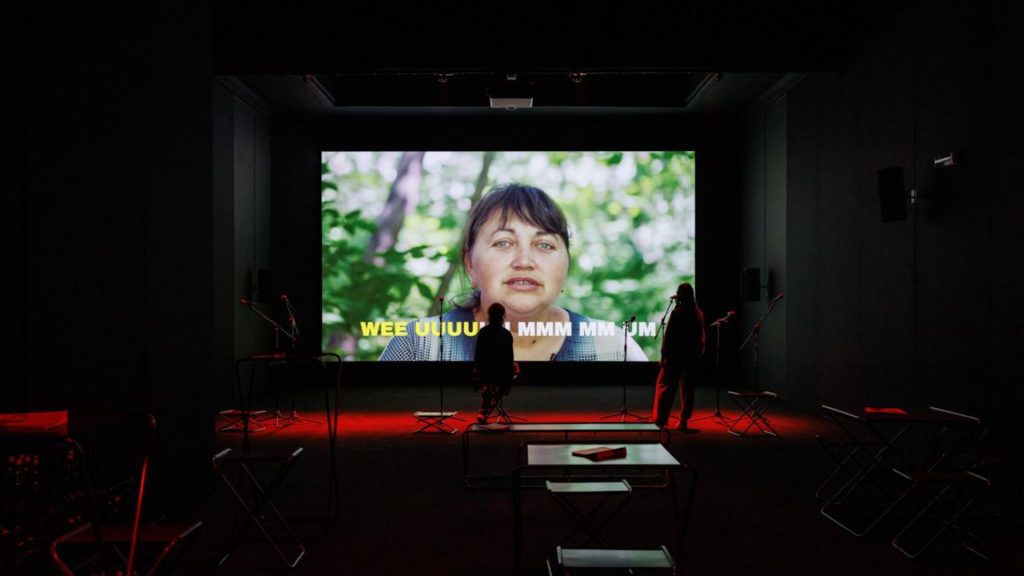
The audiovisual installation from Poland takes the form of a ‘karaoke’ made with the sounds of the ongoing war in neighboring Ukraine.
The rules of war vary depending on the type of attack, and learning the ruthless language of weapons can make the difference between life and death. The audiovisual installation from Poland takes the form of a ‘karaoke’ made with the sounds of the ongoing war in neighboring Ukraine. The protagonists of this unique narrative, created by the Open Group collective – who previously curated the Ukrainian space at the 2019 Biennale and are now engaged in the Polish project – are civilian refugees recounting their war experiences through auditory memories fixed in their minds like a tragic soundtrack of their trauma. As texts describing firearm models scroll, the audience is invited to reproduce the sounds of gunfire, missiles, and explosions.
Initially, the Pavilion was set to host a project by artist Ignacy Czwartos (1966), which aimed to retrace the tragic events of the 20th century and Poland’s position caught between the two totalitarian regimes of Nazi Germany and Soviet Russia. However, a change in government at the end of last year led to a shift in the program. Thus, Repeat After Me II arrives in Venice with an existing narrative, far from being a mere fallback, it emerges as one of the most interesting projects of this Biennale. The focus shifts to the ongoing war just a few kilometers from the national border, presented as a collective experience that transcends differences in age, origin, social status, and profession, giving voice to those who have lived through the war and concentrating on their personal ways of experiencing tragedy.
The installation, which continues and expands the work originally completed in 2022 by the current three members of Open Group, Yuriy Biley (1988), Pavlo Kovach (1987), and Anton Varga (1989), draws inspiration from pamphlets by the Ukrainian Ministry of Culture and Information Policy, which advise citizens on how to react depending on the specific weapons used in attacks. The three artists have envisioned the space as a meeting place where, in a safe environment, spectators can experience the war and “acquire knowledge that could one day prove useful.” The apocalyptic echo of this warning is amplified by overlapping testimonies recorded in 2022 and 2024, highlighting the dramatic persistence of memory over time, and juxtaposing them with images showing the evolution of military technology.